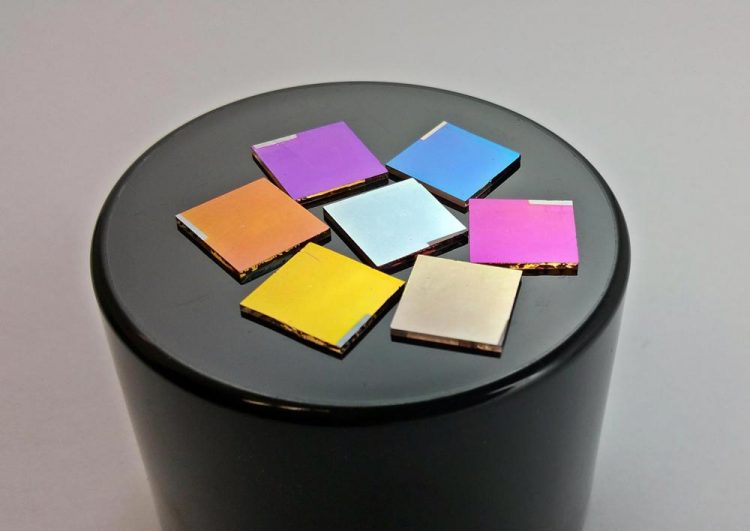Plasmonic biosensors enable development of new easy-to-use health tests

The carriers containing Ag nanoparticles are covered with various dielectrics of AlN, SiO2 and the composites thereof that are placed on a black background to enhance the reflectivity contrast of various colours at a normal angle of incidence. Credit: Aalto University
A rapid analysis by biosensors helps recognize inflammatory bowel diseases, cancer and other diseases rapidly and start relevant treatments in time. In addition to using discovery in biomedicine, industry may use advanced applications in energy.
Researchers created a new biosensor by depositing plasmonic metaparticles on a black, physical body that absorbs all incident electromagnetic radiation. A plasmon is a quantum of plasma oscillation. Plasmonic materials have been used for making objects invisible in scientific tests. They efficiently reflect and absorb light. Plasmonic materials are based on the effective polarizabilities of metallic nanostructures.
“It is extraordinary that we can detect diseased exosomes by the naked eye. The conventional plasmonic biosensors are able to detect analytes solely at a molecular level. So far, the naked-eye detection of biosamples has been either rarely considered or unsuccessful”, says Professor Mady Elbahri from Aalto University.
Plasmonic dipoles are famous for their strong scattering and absorption. Dr. Shahin Homaeigohar and Moheb Abdealziz from Aalto University explain that the research group has succeeded in demonstrating the as-yet unknown specular reflection and the Brewster effect of ultrafine plasmonic dipoles on a black body host.
“We exploited it as the basis of new design rules to differentiate diseased human serum exosomes from healthy ones in a simple manner with no need to any specialized equipment”, says Dr. Abdou Elsharawy from the University of Kiel.
The novel approach enables a simple and cost-effective design of a perfect colored absorber and creation of vivid interference plasmonic colors.
According to Elbahri, there is no need to use of sophisticated fabrication and patterning methods. It enables naked-eye environmental and bulk biodetection of samples with a very minor change of molecular polarizability of even 0.001%.
###
The study was published in Advanced Materials.
Media Contact
All latest news from the category: Health and Medicine
This subject area encompasses research and studies in the field of human medicine.
Among the wide-ranging list of topics covered here are anesthesiology, anatomy, surgery, human genetics, hygiene and environmental medicine, internal medicine, neurology, pharmacology, physiology, urology and dental medicine.
Newest articles

Properties of new materials for microchips
… can now be measured well. Reseachers of Delft University of Technology demonstrated measuring performance properties of ultrathin silicon membranes. Making ever smaller and more powerful chips requires new ultrathin…

Floating solar’s potential
… to support sustainable development by addressing climate, water, and energy goals holistically. A new study published this week in Nature Energy raises the potential for floating solar photovoltaics (FPV)…

Skyrmions move at record speeds
… a step towards the computing of the future. An international research team led by scientists from the CNRS1 has discovered that the magnetic nanobubbles2 known as skyrmions can be…





















